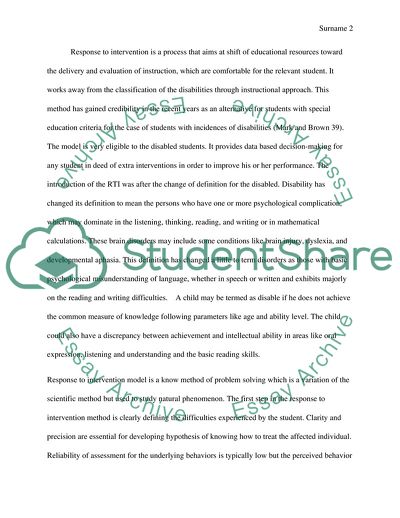Cite this document
(The Academic Outcomes for Students with Reading Disabilities Essay Example | Topics and Well Written Essays - 1250 words, n.d.)
The Academic Outcomes for Students with Reading Disabilities Essay Example | Topics and Well Written Essays - 1250 words. https://studentshare.org/education/1777669-does-rti-response-to-intervention-improve-the-academic-outcomes-for-students-with-reading-disabilities
The Academic Outcomes for Students with Reading Disabilities Essay Example | Topics and Well Written Essays - 1250 words. https://studentshare.org/education/1777669-does-rti-response-to-intervention-improve-the-academic-outcomes-for-students-with-reading-disabilities
(The Academic Outcomes for Students With Reading Disabilities Essay Example | Topics and Well Written Essays - 1250 Words)
The Academic Outcomes for Students With Reading Disabilities Essay Example | Topics and Well Written Essays - 1250 Words. https://studentshare.org/education/1777669-does-rti-response-to-intervention-improve-the-academic-outcomes-for-students-with-reading-disabilities.
The Academic Outcomes for Students With Reading Disabilities Essay Example | Topics and Well Written Essays - 1250 Words. https://studentshare.org/education/1777669-does-rti-response-to-intervention-improve-the-academic-outcomes-for-students-with-reading-disabilities.
“The Academic Outcomes for Students With Reading Disabilities Essay Example | Topics and Well Written Essays - 1250 Words”. https://studentshare.org/education/1777669-does-rti-response-to-intervention-improve-the-academic-outcomes-for-students-with-reading-disabilities.


